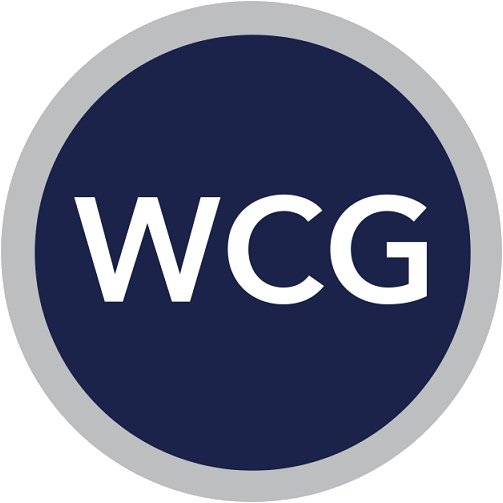Make Your Recruiting Strategy Work Smarter, Not Harder, To Reach Your Goals
Recruiting often brings up a lot of feelings for people, whether you are on the candidate side or on the hiring side of the equation. Putting an appropriate amount of time into recruiting the right talent will pay off in the long run. A successful recruitment strategy is more than just posting a job online and praying people apply. It requires a well thought out plan from beginning to end. As a Talent Acquisition professional or hiring manager, do you ever feel like there isn’t enough time in the day to spend on recruiting that helps you meet your goals?
Finding motivated employees that have all the criteria you want can be like looking for a needle in a haystack. In Talent Acquisition, they often say “hire for attitude and train for skill.” This doesn’t mean that there isn’t a baseline for a certain level of skills; it means that you can find a very motivated employee that might need to be taught some things to successfully do the job. The likelihood of finding someone that meets 100% of your criteria can be like finding a unicorn! This is where The Wilbanks Consulting Group team can help with developing a recruitment strategy.
Laying a Solid Foundation: Recruitment Marketing And Organizational Design
Prioritizing how and where you recruit can go a long way in building a successful team. But before you begin recruiting, it’s important that your employer brand aligns to your organization mission, vision, and values. Think of your employer brand as how you market to potential employees versus to customers or clients. What is your reputation saying about you? If it doesn’t align (or you aren’t sure), approach your Talent Acquisition team or Marketing department, as they can likely align the two, making your company more attractive to potential candidates.
Re-evaluate your organizational charts and future hiring needs to determine your current employment opportunities. An important step in the process is to take another look at what work needs to be accomplished before you post a job. Is the role at the right level, right title, right pay to be competitive in the market, and doing the right type of work to meet business needs going forward?
You will maximize your return on investment (ROI) if your recruitment efforts have a solid foundation that aligns with your business needs and if everyone is on the same page before you start looking for candidates. It’s frustrating both for a hiring manager and for candidates if you find out you need something different than you initially planned for (and potentially budgeted for) halfway through the process.
The Importance Of A Recruitment Strategy
Top Workplaces defines a recruitment strategy as “a plan of action for finding the best possible candidates for your company's open positions. A good recruitment strategy defines the candidates you want to attract, describes why you're looking for them, and explains how you intend to recruit them to your organization.”
The current unemployment rate is at 3.8%, and Forbes reminds us that there are fewer workers available in the market, which will continue as people retire. That’s why having an employer brand (marketing to a tight candidate pool to be the employer of choice) and connected recruiting strategy can have a big impact. Differentiating yourself will be key as the market continues to be a candidate’s market.
It can be overwhelming to think about where to start, but our The Wilbanks Consulting Group has a strong HR and recruiting background and has helped companies and non-profit organizations set up successful recruiting strategies with strong ROI. Contact us today to partner together to build a recruitment strategy that helps you meet your business goals.
Developing Your Recruitment Strategy
It’s important that your recruitment strategy aligns with your organization’s goals, values, and guiding principles. Think about what makes you unique as an employer and how you are marketing yourself as an organization to potential hires. Aligning your recruitment strategy to your brand ensures you are attracting candidates that are a good fit.
Here are tips to evaluate your current recruitment strategy or to set up a new one with a solid foundation. Ask yourself “What’s working? What’s not working?” for each of these.
Where do you recruit? Posting and praying (as it’s referred to in Talent Acquisition) isn’t a good strategy. Keep in mind that where you post and recruit should be different for different roles. For example, utilize different sites and sources if you are looking to fill an IT role than you would for a finance role. There are many additional platforms to consider beyond your organization’s website, Indeed, and LinkedIn.
How do you recruit? Think about how you initiate the hiring process, who owns it, what the process itself looks like. Are there any bottlenecks? Are you taking too long to decide? Know the role everyone plays in your recruitment process, and ensure everyone has clarity upfront to ensure a seamless candidate experience. The longer your process takes, the more likely you are to lose out on strong candidates!
Why should someone work for your organization? This is where your employer value proposition (EVP) – or what sets your brand apart from others in the industry – comes in. Why should someone work for you; what’s your culture like; why should they stay with you? Having a positive reputation in the marketplace helps in recruiting. A weak or unclear brand can hurt you or limit your candidate pool.
What are your hard-to-fill roles and why? What roles have the highest turnover? You may want to consider an ongoing position posting for roles with high turnover. For hard to fill roles, it may be necessary to use a paid job posting platform rather than the free ones. For both scenarios, leveraging networks will help to maximize your exposure for the opportunity.
The End Goal: A Successful Recruitment Strategy
It’s important to have your hiring process buttoned up in this competitive talent market to not miss out on the hires you DO want. The quicker you can go from job posting to applications to interviews to offer, the more successful you will be at getting the best candidate for the role. Don’t rush to fill jobs just “because”, but also don’t land yourself in “analysis paralysis” by screening too many candidates or conducting too many rounds of interviews. Find a good balance and when you do offer the job, put forward the best offer that you can the first time you contact the candidate.
WCG can help you develop a recruitment strategy, evaluate your existing recruiting processes, develop and refine job postings, in addition to providing support for the entire recruitment life cycle. Reach out to us today to get started!




